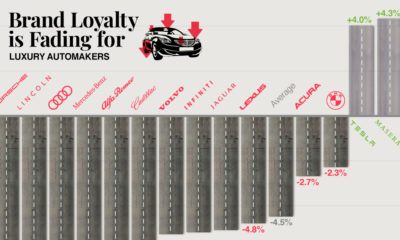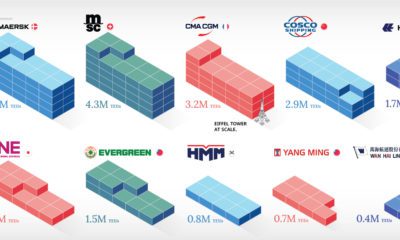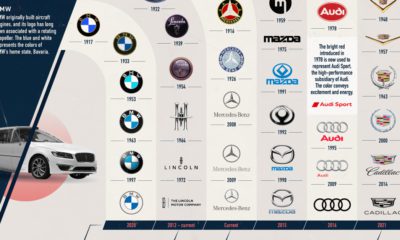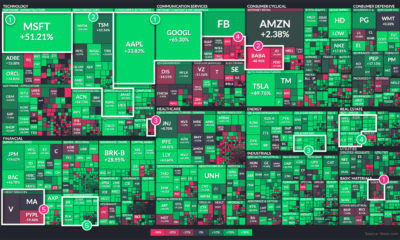The color red is the perfect example. When it is used as a primary color for McDonald’s, red is meant to energize and attract the attention of potential customers. Red is also thought by some psychologists as a hunger stimulant, which might help them sell more Big Macs and McNuggets at the end of the day. However, in the case of a company such as British Airways, red is supposed to represent none of those things. For an airline brand, red should be about warmth and a sense of caring, and it ostensibly helps to make customers feel more comfortable flying. For the famous shoe brand Vans, the color red is supposed to evoke feelings of desire and passion, with a hope that customers will link these concepts intrinsically to their brand. How can red mean so many different things at the same time? The answer is context, much of which is provided by consumers choosing between brands within a particular industry.
Color and Context
When consumers plan to make a purchase decision, they are typically deciding between an evoked set of companies that they’re familiar with for a specific industry or sector. In buying an automobile, for example, a consumer may only to be willing to only consider buying a Toyota, Ford, or Honda. Since these brands are competing against one another for a “spot” in the mind of consumers, their brands are positioned based on consumer needs and desires in order to win certain associations. Color is an important part of this – but the need is only to differentiate from competitors within an industry, since non-auto brands like McDonald’s or Calvin Klein are not a part of the evoked set of brand choices in this situation. Therefore, industry context is an essential factor that determines the color choices made by companies for their branding.
Examples: Color in Branding
Today’s infographic from Towergate Insurance breaks down 26 industries by the colors used in top brands, providing an additional focus on industries such as autos, pharmaceutical, and apparel to identify the reasons why particular colors are used. Here are some examples worth thinking about: Autos Based on the breakdown of the top 20 brands in the auto industry, it is interesting to see that silver is used with more prominence than in other sectors. Silver provides a sense of luxury and high-quality workmanship. Red and blue are also popular colors for brands in the auto sector. Red can symbol masculinity, while blue is supposed to represent reliability for brands like Volkswagen or Ford. Pharma Within the context of pharmaceutical branding, the concepts of health, vitality, and optimism are important. Blue, which is used as a color in branding for companies such as Pfizer, is meant to represent well-being. Meanwhile, GlaxoSmithKline’s orange is meant to be optimistic and energetic. Vitality or health can also be represented with green, which has a strong association with nature and healing. Apparel Fashion is dominated by companies that use black as a part of their branding. Of the top 20 apparel and accessory brands, 12 of them use black in their logos to evoke senses of sophistication, formality, style, or luxury. These include companies such as Chanel, Zara, Adidas, Nike, Oakley, Burberry, Cartier, and many others. on Even while political regimes across these countries have changed over time, they’ve largely followed a few different types of governance. Today, every country can ultimately be classified into just nine broad forms of government systems. This map by Truman Du uses information from Wikipedia to map the government systems that rule the world today.
Countries By Type of Government
It’s important to note that this map charts government systems according to each country’s legal framework. Many countries have constitutions stating their de jure or legally recognized system of government, but their de facto or realized form of governance may be quite different. Here is a list of the stated government system of UN member states and observers as of January 2023: Let’s take a closer look at some of these systems.
Monarchies
Brought back into the spotlight after the death of Queen Elizabeth II of England in September 2022, this form of government has a single ruler. They carry titles from king and queen to sultan or emperor, and their government systems can be further divided into three modern types: constitutional, semi-constitutional, and absolute. A constitutional monarchy sees the monarch act as head of state within the parameters of a constitution, giving them little to no real power. For example, King Charles III is the head of 15 Commonwealth nations including Canada and Australia. However, each has their own head of government. On the other hand, a semi-constitutional monarchy lets the monarch or ruling royal family retain substantial political powers, as is the case in Jordan and Morocco. However, their monarchs still rule the country according to a democratic constitution and in concert with other institutions. Finally, an absolute monarchy is most like the monarchies of old, where the ruler has full power over governance, with modern examples including Saudi Arabia and Vatican City.
Republics
Unlike monarchies, the people hold the power in a republic government system, directly electing representatives to form government. Again, there are multiple types of modern republic governments: presidential, semi-presidential, and parliamentary. The presidential republic could be considered a direct progression from monarchies. This system has a strong and independent chief executive with extensive powers when it comes to domestic affairs and foreign policy. An example of this is the United States, where the President is both the head of state and the head of government. In a semi-presidential republic, the president is the head of state and has some executive powers that are independent of the legislature. However, the prime minister (or chancellor or equivalent title) is the head of government, responsible to the legislature along with the cabinet. Russia is a classic example of this type of government. The last type of republic system is parliamentary. In this system, the president is a figurehead, while the head of government holds real power and is validated by and accountable to the parliament. This type of system can be seen in Germany, Italy, and India and is akin to constitutional monarchies. It’s also important to point out that some parliamentary republic systems operate slightly differently. For example in South Africa, the president is both the head of state and government, but is elected directly by the legislature. This leaves them (and their ministries) potentially subject to parliamentary confidence.
One-Party State
Many of the systems above involve multiple political parties vying to rule and govern their respective countries. In a one-party state, also called a single-party state or single-party system, only one political party has the right to form government. All other political parties are either outlawed or only allowed limited participation in elections. In this system, a country’s head of state and head of government can be executive or ceremonial but political power is constitutionally linked to a single political movement. China is the most well-known example of this government system, with the General Secretary of the Communist Party of China ruling as the de facto leader since 1989.
Provisional
The final form of government is a provisional government formed as an interim or transitional government. In this system, an emergency governmental body is created to manage political transitions after the collapse of a government, or when a new state is formed. Often these evolve into fully constitutionalized systems, but sometimes they hold power for longer than expected. Some examples of countries that are considered provisional include Libya, Burkina Faso, and Chad.













